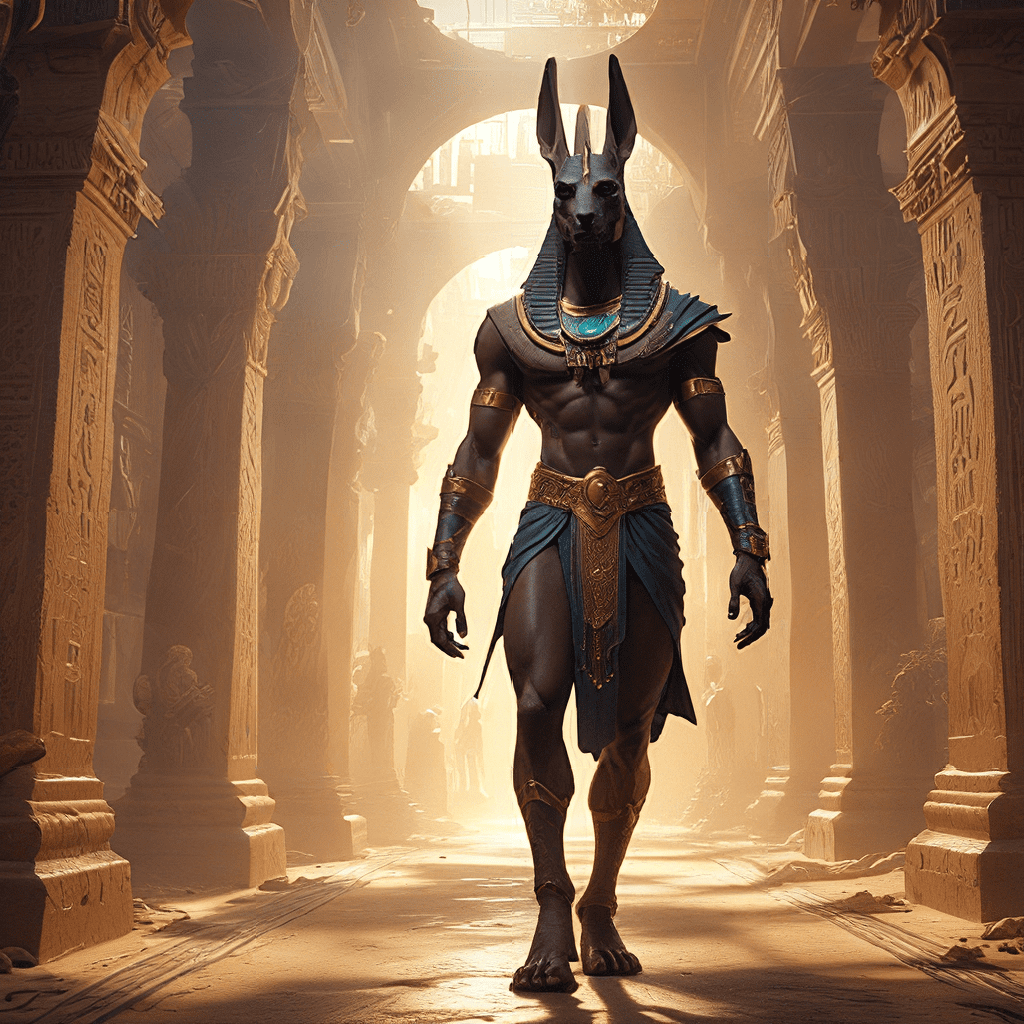## Anubis: The God of the Afterlife Journey
1. Introduction: The Jackal-Headed God
Anubis, the jackal-headed god, holds a prominent place in ancient Egyptian mythology. He is the god of the afterlife, responsible for guiding souls on their journey to the underworld. Anubis is intimately linked with death, mummification, and the weighing of the heart ceremony, a crucial part of the afterlife judgment. His presence is felt throughout the afterlife process, ensuring a smooth transition for the deceased.
2. Origins and Symbolism
The origins of Anubis are deeply entwined with the jackal, an animal known for its scavenging habits. In ancient Egypt, jackals were often seen near burial grounds, leading to their association with death and the underworld. The jackal’s scavenging behavior was interpreted as a connection to the spirit world, linking it to the afterlife and Anubis.
The jackal was a powerful symbol in ancient Egyptian culture, embodying both fear and respect. Its connection to the underworld made it a potent representation of the unknown and the unseen. Anubis, with his jackal head, inherited these symbolic associations, becoming a prominent figure in Egyptian mythology and religious practices.
3. The Afterlife Journey: A Guided Tour
In ancient Egyptian beliefs, the afterlife journey was a complex and significant process. Upon death, the soul, or “ka,” embarked on a long and arduous journey to the underworld. This journey involved numerous trials and challenges, and Anubis, the god of the afterlife, served as the guide for the deceased.
Anubis’s role was crucial in ensuring the soul’s safe passage through the underworld. He guided the soul through various obstacles, assisting them in navigating the treacherous paths and facing the challenges ahead. His presence was a constant source of comfort and protection, ensuring the deceased’s smooth transition into the afterlife.
4. Weighing of the Heart Ceremony
The weighing of the heart ceremony was a central ritual in ancient Egyptian belief. It determined the fate of the soul in the afterlife. During this ceremony, the heart of the deceased was weighed against the feather of Ma’at, the goddess of truth and justice.
Anubis played a vital role in this ceremony. He was the one who weighed the heart, scrutinizing it for its weight and purity. If the heart was found to be lighter than the feather, the deceased was deemed worthy of entering the afterlife and enjoying eternal peace. However, if the heart was heavier, it meant the deceased had led a life of sin and would be devoured by the demon Ammit, preventing them from entering the afterlife.
5. Mummification and the Necropolis
Anubis’s connection to mummification, the preservation of the body, is a testament to his role in the afterlife journey. Ancient Egyptians believed that preserving the body was crucial for the soul’s journey into the afterlife. Mummification ensured that the body remained intact, allowing the soul to return to it in the afterlife.
Anubis was closely associated with the necropolises, the cities of the dead, where tombs and burial grounds were located. He was considered the guardian of these sacred spaces, protecting the deceased and ensuring their safe passage to the underworld. His presence was felt in the tombs, where his image often adorned the walls and ceilings, symbolizing his role in the afterlife.
6. The Duat: The Underworld
The Duat, the Egyptian underworld, was a complex and mysterious realm filled with challenges and obstacles. It was said to be a place of darkness and danger, where the soul faced numerous trials and judgments before reaching eternal peace.
Anubis held a position of authority in the Duat. He was the guardian of this realm, ensuring that the deceased faced the trials and judgments with fairness. His presence in the Duat was a constant reminder of his power and influence over the afterlife journey.
7. Anubis and Osiris: A Divine Partnership
Anubis and Osiris, the god of the underworld, formed a powerful partnership in the afterlife realm. Osiris was the ruler of the underworld, responsible for judging the souls and determining their fate. Anubis, as the god of the afterlife journey, worked directly with Osiris, ensuring the smooth flow of the afterlife process.
Their roles were distinct but complementary. Osiris judged the souls based on their actions in life, while Anubis facilitated the journey and guided the souls through the underworld. Together, they ensured a fair and just system for the deceased, ensuring that only those worthy of eternal peace reached the afterlife.
8. Anubis in Egyptian Art and Literature
Anubis’s prominent role in Egyptian mythology is reflected in his frequent appearances in Egyptian art. He is depicted in various forms, including statues, paintings, and tomb murals. These representations often show him with his jackal head, holding the ankh, the symbol of life, or the scales used in the weighing of the heart ceremony.
His importance is further emphasized in Egyptian literature. Anubis is a central figure in many religious texts, including the Book of the Dead, a guidebook for the deceased’s journey through the afterlife. These texts highlight his role as a guide and protector, and emphasize his significance in ancient Egyptian beliefs.
9. Anubis in Modern Culture
Anubis’s influence extends far beyond ancient Egypt. His image and symbolism are present in modern culture, reflecting his enduring appeal and relevance. He is a popular figure in literature, film, and video games, often portrayed as a mysterious and powerful figure associated with the afterlife.
His association with death and the underworld makes him a captivating figure, representing the unknown and the unseen. Anubis continues to fascinate and intrigue people today, reminding us of the enduring power of ancient Egyptian mythology.




